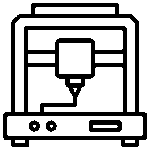MOSFET Reverse Recovery Optimization: A Beginner’s Guide

When working with power electronics or high-speed circuits, engineers and hobbyists often face the issue of MOSFET reverse recovery. This happens when a MOSFET, switching from “on” to “off,” takes too long to stop conducting current, leading to unwanted energy loss, heat generation, and reduced efficiency. The problem is most noticeable in circuits with high-speed switching, like in motor drivers or power supplies.
The Problem :
MOSFETs are used in many electronics to switch currents on and off. However, when they switch off, they can continue conducting for a short period, called reverse recovery. This extra time can lead to power loss, heating, and noise. Reverse recovery is most noticeable when working with high-speed circuits such as motor drivers or power supplies, where quick and efficient switching is critical.
The Solution :
The good news is that this problem can be optimized. To reduce reverse recovery time, engineers can:
- Choose Low Reverse Recovery MOSFETs: Some MOSFETs are specifically designed with faster switching times and minimal reverse recovery charge.
- Use Snubber Circuits: These circuits help manage the voltage spikes that occur during the switching process.
- Optimize Gate Drive Circuits: Faster gate drive circuits can reduce the switching time, helping MOSFETs turn off quicker.
Simple Explanation :
MOSFETs are used in many electronics to switch currents on and off. However, when they switch off, they can continue conducting for a short period, called reverse recovery. This extra time can lead to power loss and unwanted noise. The good news is that this can be optimized by selecting the right MOSFETs, using snubber circuits, or tweaking the gate drive circuits to speed up the switching process.
Practical Example :
Imagine you’re building a motor driver circuit, and your MOSFET is not switching off fast enough. As the MOSFET continues to conduct for too long, the motor may stutter or waste power. By choosing a low reverse recovery MOSFET and optimizing the switching speed, the motor will run smoother, and your power efficiency will improve.
Sample Calculation :
If your MOSFET has a reverse recovery charge of 100nC (nano-Coulombs) and the switching frequency is 10kHz, the energy lost per cycle would be:
Energy = (Reverse Recovery Charge) x (Voltage) Energy = 100nC x 12V = 1.2 microjoules
This small loss adds up quickly in high-frequency circuits, so optimizing the reverse recovery is key!
Product Suggestion :
For your next project, consider upgrading your components with MOSFETs or snubber circuits to reduce reverse recovery loss. Check out Made in India MOSFETs for your design. Shop now at SmartXProKits.in and support our work and India’s innovation—buy from our Make in India site!




















